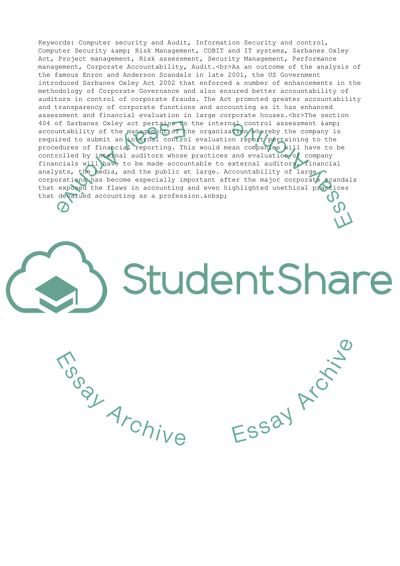Cite this document
(Use of COBIT as Corporate Governance Audit Methodology Essay, n.d.)
Use of COBIT as Corporate Governance Audit Methodology Essay. Retrieved from https://studentshare.org/business/1727311-dissertation-editing
Use of COBIT as Corporate Governance Audit Methodology Essay. Retrieved from https://studentshare.org/business/1727311-dissertation-editing
(Use of COBIT As Corporate Governance Audit Methodology Essay)
Use of COBIT As Corporate Governance Audit Methodology Essay. https://studentshare.org/business/1727311-dissertation-editing.
Use of COBIT As Corporate Governance Audit Methodology Essay. https://studentshare.org/business/1727311-dissertation-editing.
“Use of COBIT As Corporate Governance Audit Methodology Essay”, n.d. https://studentshare.org/business/1727311-dissertation-editing.


